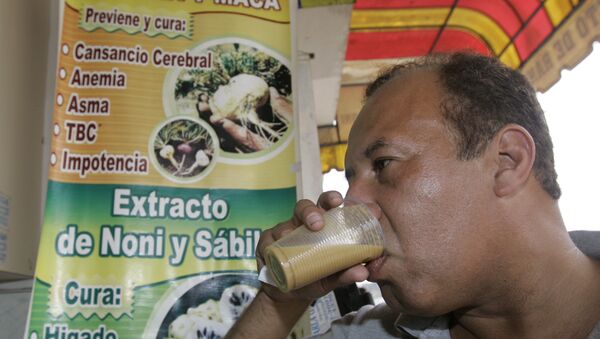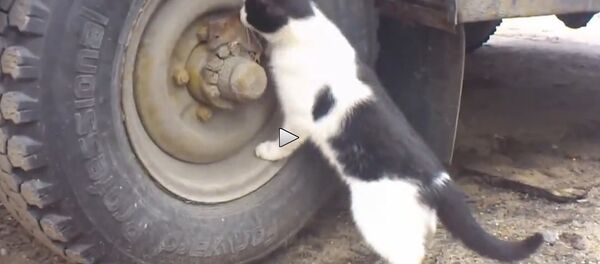The drink's main ingredient is a water frog from remote Lake Titicaca that is actually listed as critically endangered by the International Union for Conservation of Nature.
The recipe calls for one live frog, whacked against the counter until dead, then skinned and thrown into a blender to be mixed with carrots, the Peruvian maca root and honey. The final result is a light-green juice that some believe can cure asthma, osteoporosis and fatigue, in addition to its carnal advantages.
Cecilia Cahuana drinks frog juice because "it's good for the children, for anemia, bronchitis and also for older persons, it's extremely good," she told the Associated Press in a 2014 report.
However, Dr. Tomy Villanueva, dean of the Medical College of Lima, said in the same report that there is "no scientific evidence" that frog juice is a cure for anything.
Comically, natives call the Titicaca the "the scrotum frog," due to the blanket-like skin flaps that sag from its body, as well as its drink's reputation in the bedroom.
Some street vendors say they blend between 50 and 70 frogs per day, and many shops have tanks containing live frogs ready for the blender.
Even though science says the drink's claims are fraudulent, and the law prohibits the sale of its endangered main ingredient, frog juice remains popular because of its place in Andean culture.



